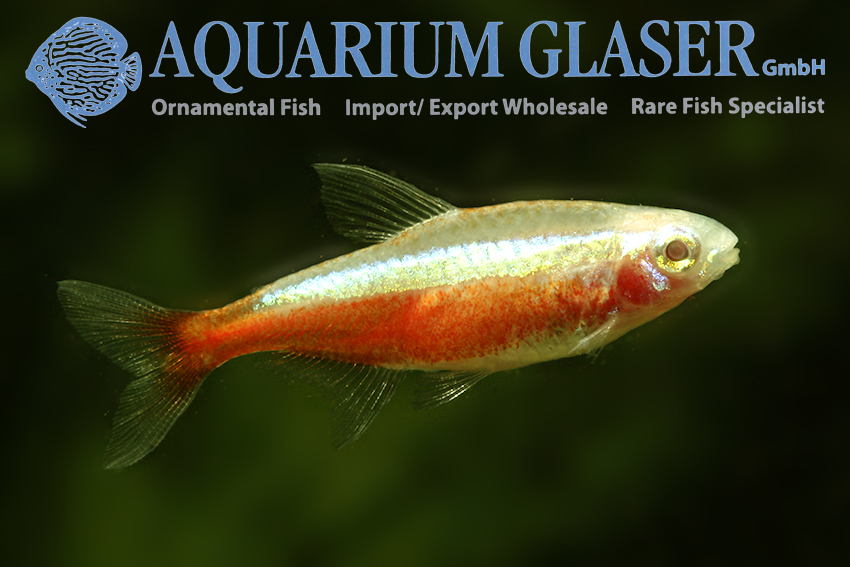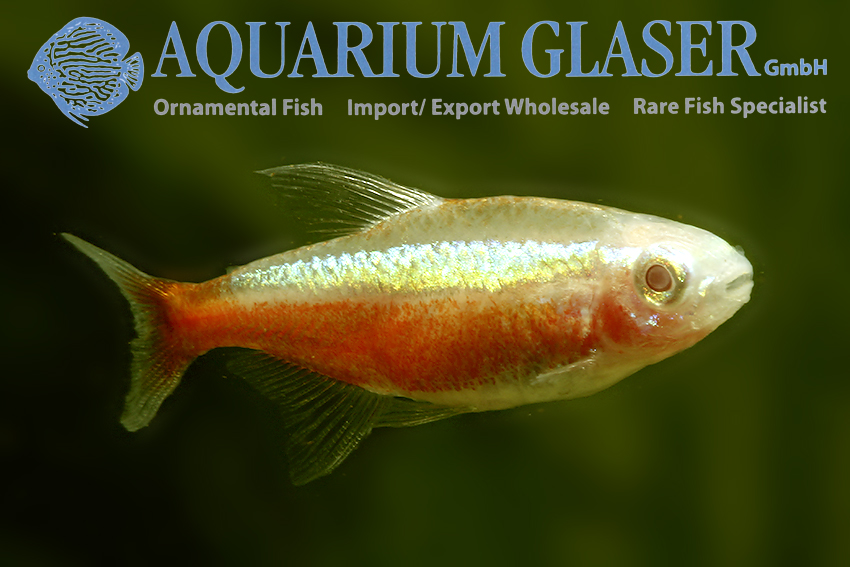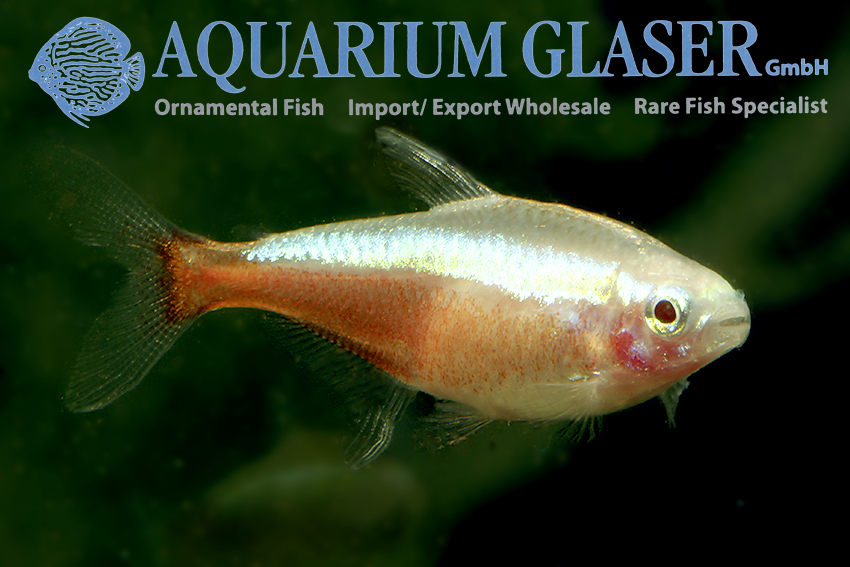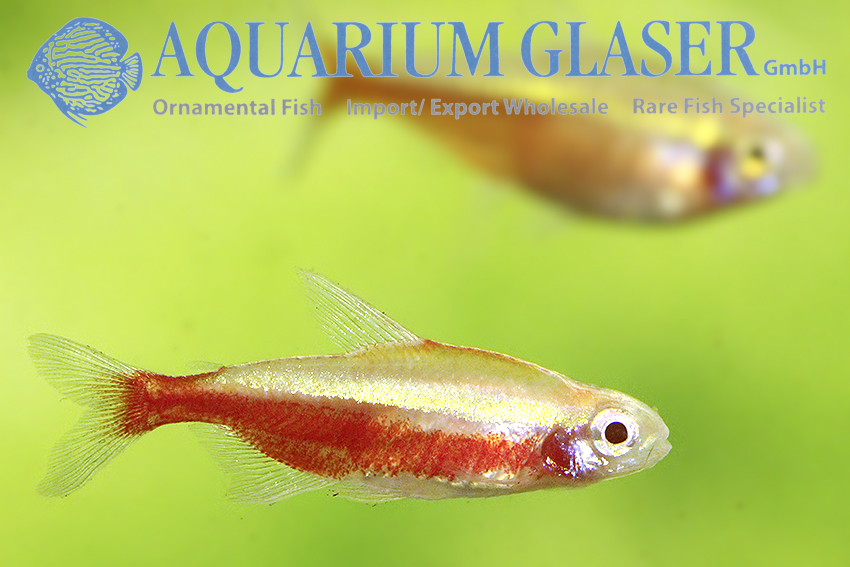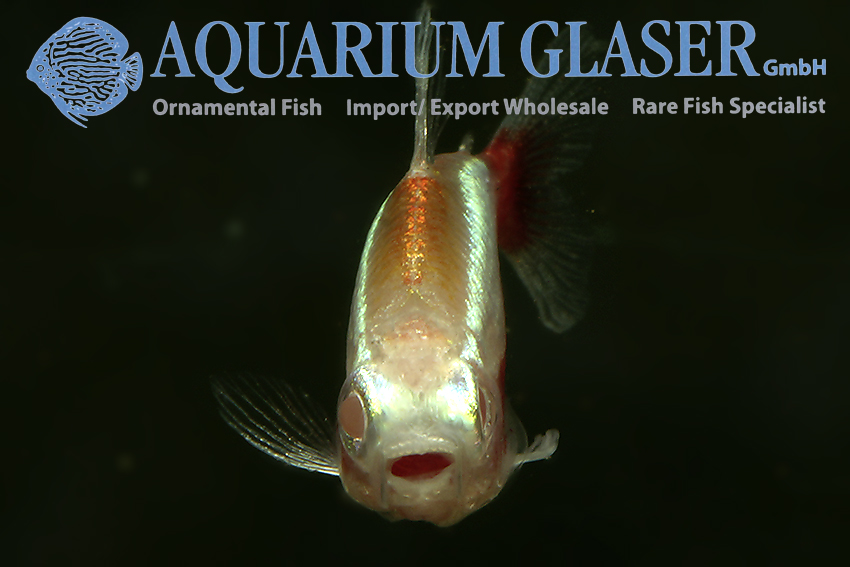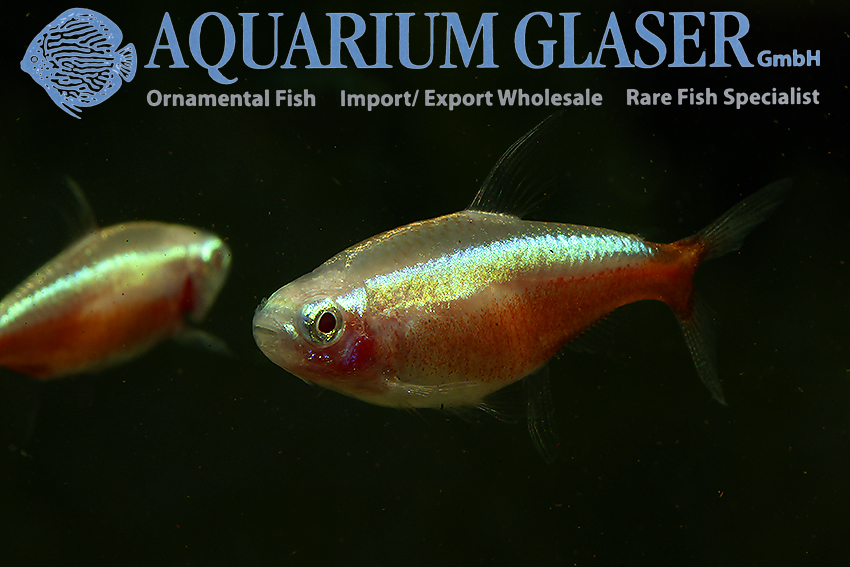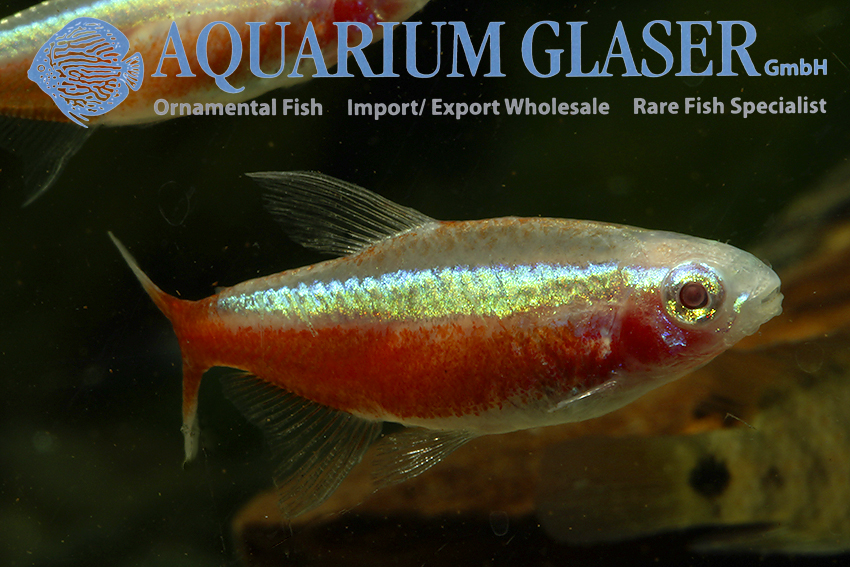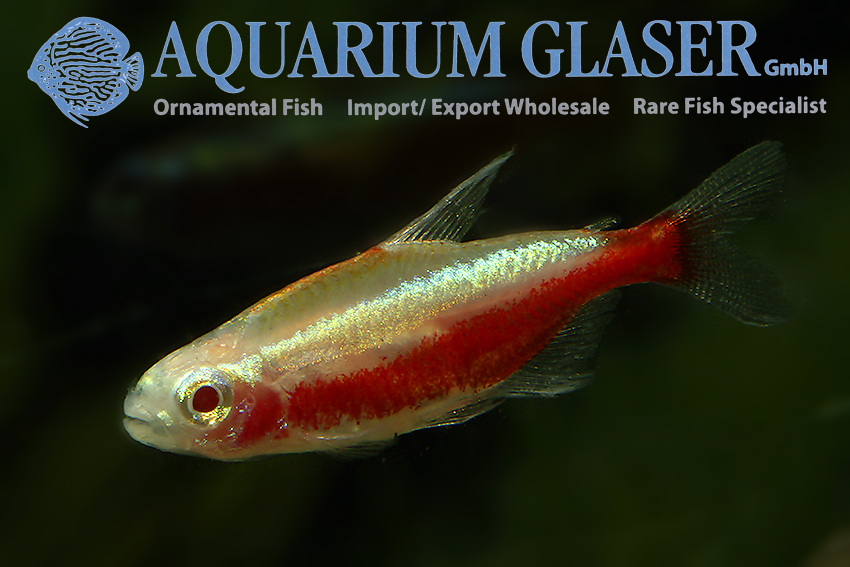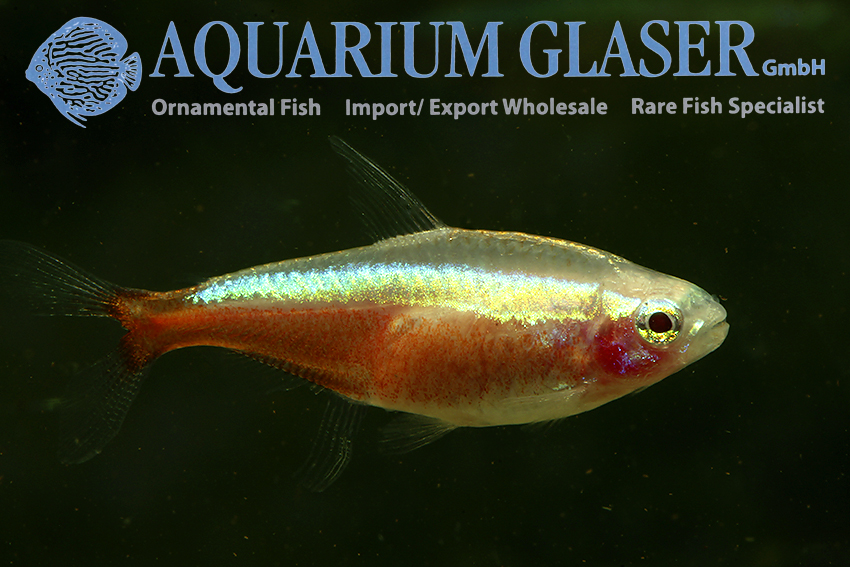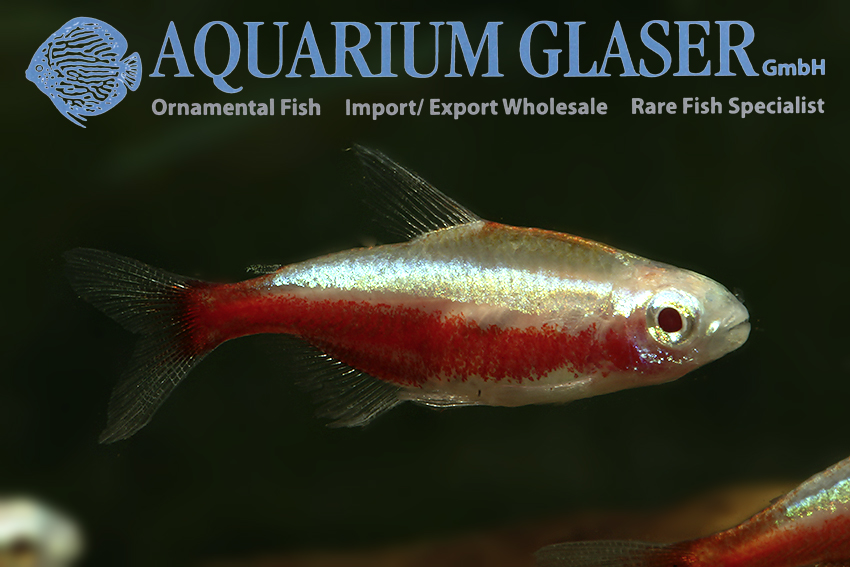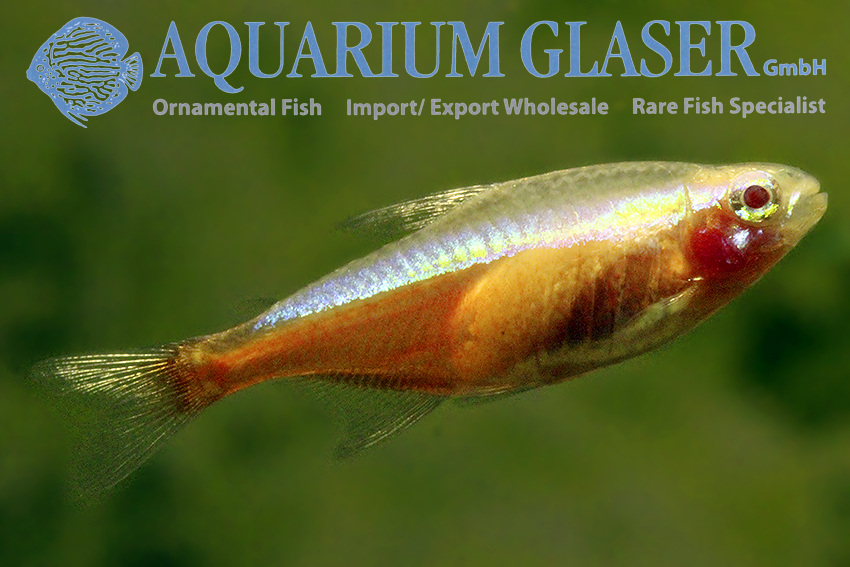The cardinal tetra, Paracheirodon axelrodi, is one of the most traded ornamental fish worldwide. It is a big exception in the ornamental fish trade, because it was mainly traded as a wild catch; it is different with almost all other important ornamental fishes, which are mainly or exclusively traded as bred ones. It is said that in the 1980s up to 10 million specimens were exported annually from Brazil. Scientific studies prove that this is without negative consequences for the natural stocks.
Unfortunately, ornamental fish exports from Brazil became increasingly difficult for political reasons. That is why nowadays more and more bred cardinal tetras are appearing on the world market, certainly at the expense of the natural environment – the unemployed ornamental fish catchers have to try to feed themselves and their families by slash-and-burn and gold mining, with devastating consequences for nature.
When an animal species is domesticated, it does not take long before mutations – i.e. changes in the genes – occur among the offspring. In contrast to nature, where 99.99% of all born animals die before they reach adulthood, up to 90% survive in human care. Although mutations also occur in nature, the probability that they will survive and pass on their genes is almost zero. For ornamental fish breeders, on the other hand, a mutation is virtually a survival advantage if it looks interesting. One such mutation is the Golden Red Neon.
Technically speaking it is a partial albino. The Golden Red Neon lacks the guanine, that is the silvery shining color, which almost all fish have. This makes the eye red and you can see the eggs in the belly of the females, because the normally silver reflecting belly skin is now transparent. The Golden Red Neon therefore look very strangely beautiful.
Due to the low genetic diversity – usually such breeding forms go back to only one specimen, which is crossed with a normally colored one; by inbreeding one finally gets hereditary strains – the Golden Red Neon are considerably less adaptable than normally colored conspecifics. One should treat it therefore very carefully.
For our customers: the animals have code 216614 on our stocklist. Please note that we only supply the wholesale trade.
Text & photos: Frank Schäfer





